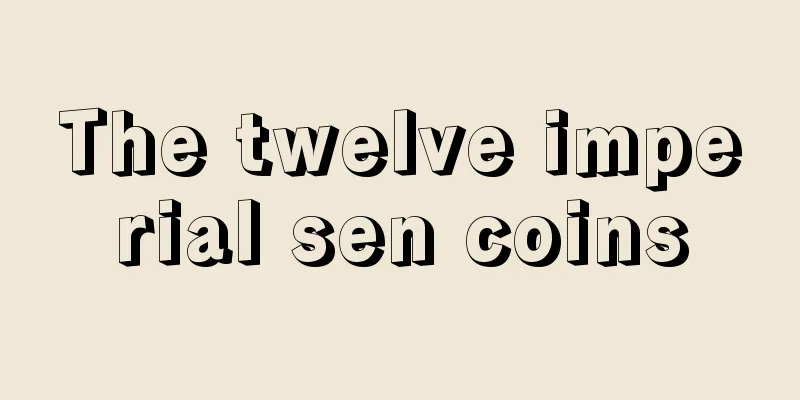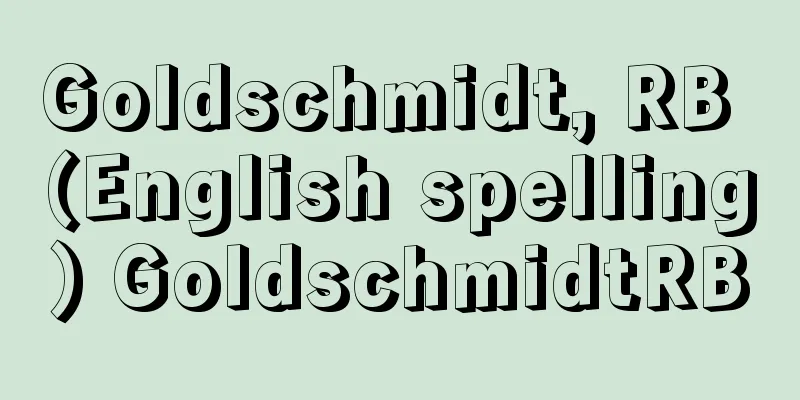The twelve imperial sen coins

|
A general term for the 12 types of copper coins issued by the Ritsuryo government in ancient Japan. These are the 12 coins: Wado-kaichin, Mannen-tsuho, Jingu-kaiho, Ryuhei-eiho, Fuju-shinpo, Jowa-shoho, Cho-nen-taiho, Joeki-shinpo, Jogan-eiho, Kanpei-taiho, Engi-tsuho, and Kengen-taiho. In addition to these, the Ritsuryo government also issued the silver coins Wado Kaichin and Taihei Genpo, and the Kaiki Shoho coin. If we also include the Fuhonsen coins (late 7th century), many of which were excavated from Asuka village in Nara prefecture in 1998 (Heisei 10), a total of 16 types of coins were issued. The reason why copper coins were repeatedly issued at intervals of about 10 to 20 years from the latter half of the 8th century onwards is the high legal value given to copper coins. In other words, the Ritsuryo government gained financial benefits by using coins with a high legal value as a means of payment. However, it was difficult to maintain this high legal value, leading to a decline in value and the rampant occurrence of privately minted coins. In response, the Ritsuryo government had no choice but to repeatedly issue new coins with high legal values. In terms of reliable excavation examples, the number of excavated Wado-kaichin copper coins is quite large, followed by the four sen coins from Mannen-tsuho to Fuju-shinho. The coins were found in the Kinai and neighboring provinces. In actual fact, the four sen coins from the 8th century were large and of high quality, but from the 9th century onwards they became small and of low quality, and even coins close to lead coins were minted. The circulation of these twelve Imperial coins declined around the end of the 10th century. [Eihara Towao] [Reference] | | |©Shogakukan "> List of Imperial Twelve Coins Source: Shogakukan Encyclopedia Nipponica About Encyclopedia Nipponica Information | Legend |
|
日本古代において律令(りつりょう)政府が発行した12種の銅銭の総称。和同開珎(わどうかいちん)、万年通宝(まんねんつうほう)、神功開宝(じんぐうかいほう)、隆平永宝(りゅうへいえいほう)、富寿神宝(ふじゅしんぽう)、承和昌宝(じょうわしょうほう)、長年大宝(ちょうねんたいほう)、饒益神宝(じょうえきしんぽう/にょうやくしんぽう)、貞観永宝(じょうがんえいほう)、寛平大宝(かんぴょうたいほう)、延喜通宝(えんぎつうほう)、乾元大宝(けんげんたいほう)の12銭をさす。律令政府はこれ以外にも、銀銭の和同開珎、大平元宝(たいへいげんぽう)、金銭の開基勝宝(かいきしょうほう)を発行しており、また1998年(平成10)に奈良県明日香(あすか)村から多く出土した富本銭(7世紀後半)を入れると合計16種の銭が発行されたことになる。 8世紀後半以降、ほぼ10~20年間隔で銅銭が繰り返し発行されたのは、銅銭に付与された高い法定価値に原因がある。すなわち、律令政府は、高い法定価値を付与した銭を支払い手段に用いることで財政的利益を得ていた。しかし、この高い法定価値を維持することはむずかしく、価値の下落と私鋳銭(しちゅうせん)の横行を招いた。これに対して律令政府は、新銭に高い法定価値を付与して繰り返し発行せざるをえなかったのである。確実な出土例では、和同開珎銅銭の出土箇所数がかなり多く、万年通宝~富寿神宝の4銭がこれに次いでいる。その出土地は各銭とも畿内(きない)と近国に集中している。現物では8世紀の4銭は大形高品位であるが、9世紀以降小形低品位化し、鉛銭に近いものまで鋳造された。これらの皇朝十二銭の流通は、ほぼ10世紀末ごろには衰退した。 [栄原永遠男] [参照項目] | | | |©Shogakukan"> 皇朝十二銭一覧 出典 小学館 日本大百科全書(ニッポニカ)日本大百科全書(ニッポニカ)について 情報 | 凡例 |
<<: A brief history of the imperial court
>>: Public hearing - Public hearing
Recommend
Anaconda (English spelling)
A city in southwestern Montana, USA. Its growth be...
Pants - trousers
A Japanese term for the two-pronged, tubular oute...
Brodiaea californica (English spelling) Brodiaea californica
…[Tora Saburo Kawabata]. … *Some of the terminolo...
Federico da Montefeltro
1422‐82 Italian mercenary captain. Born as an ille...
Kabuki - Turnip
〘 noun 〙 Song and dance. Singing and dancing. ※Sho...
Lateral force distribution coefficient method
…He became a professor in 1935. Immediately after...
Nakijin [village] - Nakijin
A village in Kunigami District, Okinawa Prefecture...
Agah
…The revolt centered on the Ikko sect Hontoku-ji ...
Sinobambusa tootsik (English spelling)
...Rikuchudake ( S. kagamiana Makino) is the most...
Silchester
...The surrounding area is home to the Barafield ...
Spectrum of the Wind
...In mid-latitudes, there is a tendency for wind...
External audit - Gaibukansa (English spelling) external audit
An audit by a third party independent of a compan...
Morning Star - Akatsuki no Myoujo
The title of a Kyogen Komai-yo song. It tells of t...
The Divine Spirit Yaguchi-Watashi
Joruri Gidayubushi. Historical piece. Five acts. ...
Umbonium moniliferum (English spelling) Umbonium moniliferum
…[Tadashige Nabe]. . … *Some of the terminology t...









